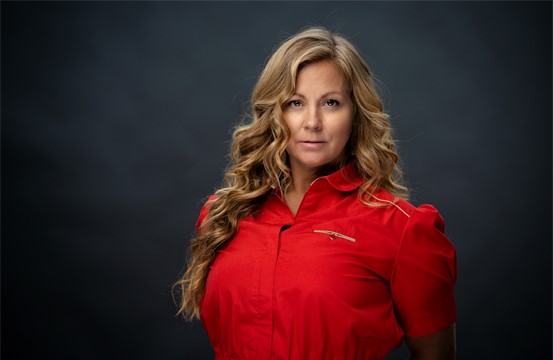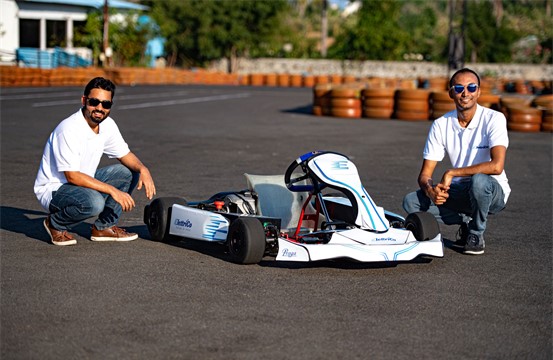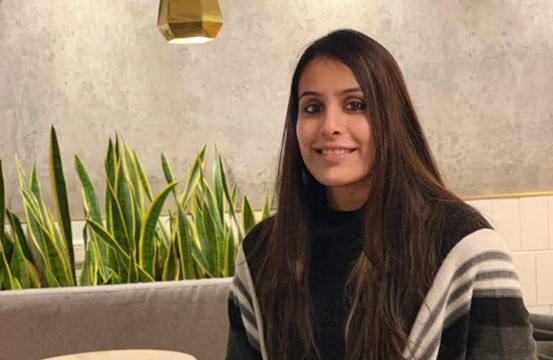This inspiring story is of a rising startup called Origen Air started by Susan Blanchet. Humans spend 90% of our time indoors—and 80% of us breathe indoor air exceeding safe pollution levels. Over time, exposure to poor air causes damage to the lungs, kidneys, and nervous system. Covid-19 has shown us that invisible threats can be the most deadly. At Origen Air, they use genetically enhanced plants, aeroponics, UVC-light sterilization, and technology to remove airborne pathogens—using NATURE as their secret ingredient. Here is the story of Origen Air in Susan’s own words.
Introduce us to the idea of Origen Air
Origen Air’s smart, living air purifier, the Sentinel, is scientifically proven to metabolize pollutants and remove airborne viruses, including coronavirus, in one pass through our system.
We have secured a patent from the University of Washington to use their genetically engineered golden pothos ivy plants, developed over 15 years, into our air purifiers. Scientists added a mammalian liver enzyme that allows them to metabolize the volatile organic compounds (VOCs) from the air. Our specialized biofilter can remove 82 to 100% of VOCs, where regular plants do not remove anything.
Origen combines these plants with UV-C light sterilization CSA certified to kill 99.9999% of airborne viruses (including coronaviruses) and probiotics to restore microbial balance to indoor spaces. Our designs improve health, wellness, productivity, and safety through cleaner air. We are a member of the Government of Canada’s Intellectual Property Pilot Program. We are currently filing several Canadian and international patents on the Sentinel with an IP Strategy extending several years.
Traditional air purifiers and HVAC filters are plastic devices designed to pull dust and dirt from the air and store it for later disposal. These mechanical purifiers cannot capture microscopic (smaller than 2.5 ppm) particles. At Origen Air, we create the world’s first air purifier that uses genetically modified golden pothos ivy as its primary biofilter. Because of the plant’s ability to metabolize microscopic toxins, all smaller than 2.5 ppm, they are not captured and released or thrown away, creating waste. Instead, they are removed completely and replaced with oxygen, playing a large future part in reducing global air pollution.
Origen Air’s mission is to revolutionize the HVAC industry with the HVAC-integrated Origen Canopy, coming in 2022. Our aim is to reduce buildings’ GHG emissions by up to 40%, by recirculating clean air rather than constantly pulling in new air and heating or cooling it. If we reduce buildings’ GHG emissions by 40% Canada-wide, this helps to single-handedly meet 30% of Canada’s Paris Accord Climate Action Goals. These revolutionary combinations will also tackle the climate crisis by using genetically modified plants to sequester carbon and reduce energy usage.
What’s your strategy story? What led you to start Origen Air?
Before founding Origen Air, I was senior legal counsel for the province of BC for 14 years. Over time, I became disheartened by the government’s inability to pursue environmental cases—especially those regarding sustainability. Suddenly, I developed an autoimmune disorder, which was around the same time that my father passed away after early-onset dementia. This led me to do my own research, which solidified the dangerous effects of volatile organic compounds on the environment and the human body.
I can’t believe how many people are unaware that the air they are breathing is harming them. HVAC maintenance is largely unregulated, and buildings only need to meet the air quality standard when they received their Occupancy Permit, which could be 50 years ago. Office buildings are some of the worst. There’s even a name for it: Sick Building Syndrome. It isn’t very comforting.
When I met my partner, Andrew Crawford, who had formerly worked selling living walls, it was time to make the jump from lawyer to entrepreneur finally. We quickly found that people liked the living walls for the aesthetic but did nothing to improve their indoor air quality. We started hunting for plants that could impact health and wellness and eventually came across the optimized golden pothos ivy at the University of Washington. From there, the rest is history.
What marketing, operation strategies are you adopting at Origen Air?
This has been my first foray into the world of tech startups, and I won’t say that it hasn’t been difficult at times. What started with just my partner and I at home has turned into a rapidly growing team of 11 working in a beautiful, sunlight-filled office where our engineers have completed putting the first Sentinel together piece by piece.
When building our team, we decided to bring on lots of young people and some student interns because we find that they have a certain eagerness and drive about them and often bring ideas to the table that are outside the box. Also, government grants cover new graduates and co-op students, which greatly reduces our costs. We received $200,000 in non-dilutive project and grant funding in 2020 to help us get to commercialization with some runway left! We also win a $90,000 Mitacs/UVic project to assist our engineers in testing, and third-party verify our product.
Our marketing strategy so far has been to try to grow as organically as possible. Because we are so sustainability-focused, it’s been pretty easy to find our tribe of like-minded investors and entrepreneurs. It’s been a blur of accelerator programs, pitch competitions, grant writing, and proposals lately. We all have the same goal of preserving the planet, so we all come together to help each other out. That part has been gratifying.
Any strategy mistakes you have made and what did you learn?
The world of startups is chaotic. There’s always so much to do and so little time. As the founder and because this company means so much to me, I feel like, in the beginning, I had a tendency to put everything on myself and become overworked. One of the most important things you can do as a leader is learning how to delegate work and trust that your staff can handle the tasks that you assign to them.
Hiring four staff last May and then eight more in the Fall and Winter has definitely reduced my burden, and, more importantly, it has increased creativity and allowed for so much more than I imagined possible to emerge this year. I think one of our biggest lessons was learning to be adaptable and take things as they come. Sometimes doors will open that you won’t even have considered, and you need to develop the ability to walk through with confidence.
Finally what advice do you have for your fellow entrepreneur readers?
The best advice that I can give to other entrepreneurs is to not lose sight of their vision. You will hear “no” many, many times before you hear the “yes” that you’re looking for, but you can’t let that get you down. Positivity is a great asset to your business. It’s contagious and will be very useful in building your network and securing investors.
A 2021 resolution – celebrate all of the wins, no matter how small! On a more personal note, I believe that the best way to grow as a person is to lend a helping hand to someone else. I think that if everyone did this, the world would be a far kinder and brighter place.
Disclaimer: The information in the above story is provided by the startup and The Strategy Story takes no responsibility for the authenticity of the product and services offered by the startup. Reader’s discretion is advised.
Check out stories of other aspiring Entrepreneurs
Also, check out our most loved stories below

Johnnie Walker – The legend that keeps walking!
Johnnie Walker is a 200 years old brand but it is still going strong with its marketing strategies and bold attitude to challenge the conventional norms.

Starbucks prices products on value not cost. Why?
In value-based pricing, products are price based on the perceived value instead of cost. Starbucks has mastered the art of value-based pricing. How?

Nike doesn’t sell shoes. It sells an idea!!
Nike has built one of the most powerful brands in the world through its benefit based marketing strategy. What is this strategy and how Nike has used it?

Domino’s is not a pizza delivery company. What is it then?
How one step towards digital transformation completely changed the brand perception of Domino’s from a pizza delivery company to a technology company?

BlackRock, the story of the world’s largest shadow bank
BlackRock has $7.9 trillion worth of Asset Under Management which is equal to 91 sovereign wealth funds managed. What made it unknown but a massive banker?

Why does Tesla’s Zero Dollar Budget Marketing Strategy work?
Touted as the most valuable car company in the world, Tesla firmly sticks to its zero dollar marketing. Then what is Tesla’s marketing strategy?

The Nokia Saga – Rise, Fall and Return
Nokia is a perfect case study of a business that once invincible but failed to maintain leadership as it did not innovate as fast as its competitors did!






